In Your Eyes – Interview with Rosalie Wang – Ivory Coast 2023
8th June 2023
At Wild Images we’ve always been proud of the broad spectrum of photographers who join us on our tours. We’ve taken seasoned bloggers, high-flying drone pilots, stock image and street photographers, people who create books and fine art prints, and photographers exhibiting their works in domestic and international salons. Over the past couple of years we’ve slowly started to have infrared (IR) photographers join us on tour which is always a welcome addition to our trips.
In early 2023, multi-award winning photographer Rosalie Wang joined our Ivory Coast tour, shooting the trip with mirrorless Sony cameras and specially adapted IR cameras. This combination of equipment not only allowed her to capture a beautifully unique portfolio of photographs from this fascinating West African country, but it also allowed her to continue shooting during the harsh light of day, where infrared really helps to combat bright light and its accompanying severe shadows.
We are honoured to say that Rosalie most likely pioneered infrared photography on our Ivory Coast tour and as her images attest, the use of this equipment was a hugely complimentary addition to her standard colour photos taken during the various ceremonies and village visits of our tour.
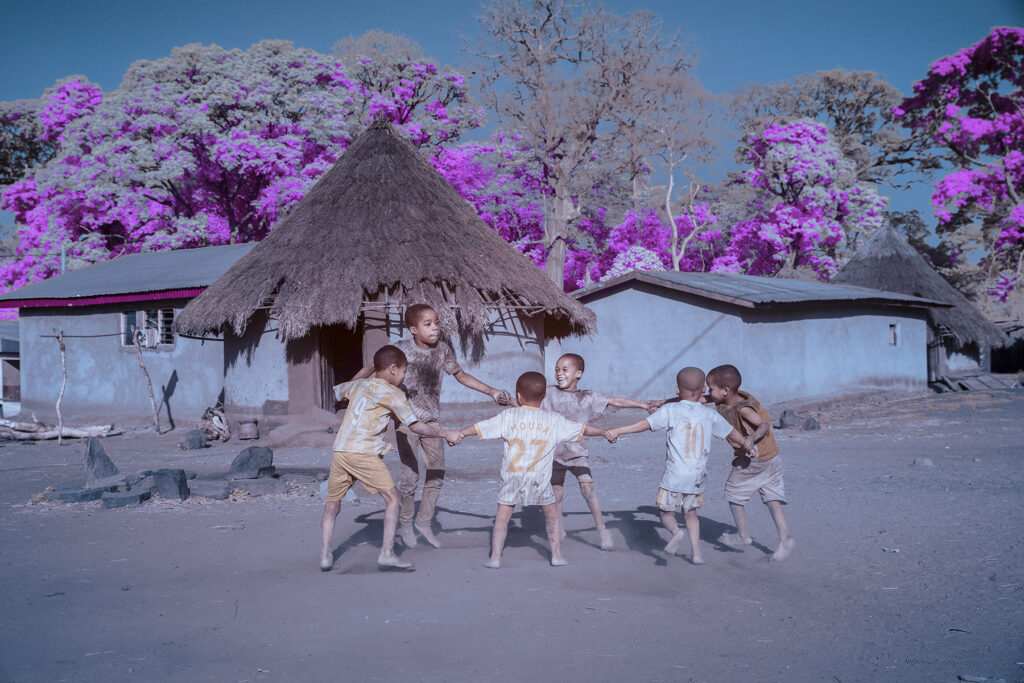
A group of children hold hands to dance before the Godoufou ceremony in their village (image by Rosalie Wang). Why Wild Images loves this – Delving into a world of IR is akin to playing with colours and light in photography that is difficult to see with the naked eye. In this case, it was wonderful to see a scene interpreted by IR with the light catching the background vegetation, a different shade capturing the buildings and yet, a realistic skin colouration of children, subtly reminding the viewer that the photo is of a real scene, rather than an imagined world.
Tell us a little more about your photography journey. How long have you been taking photos?
I would consider myself a traveller with interests of vanishing cultures, more than a photographer. Starting from 2006, I primarily photographed the landscapes in the Himalayas while traveling through western China, Nepal, India, and Bhutan. Late 2007 in Nepal, I met my first photography mentor who was dedicated to people and culture. We visited a lot of temples and villages in Kathmandu together where I was introduced to environmental portrait photography. I became more seriously interested in photography from 2014.
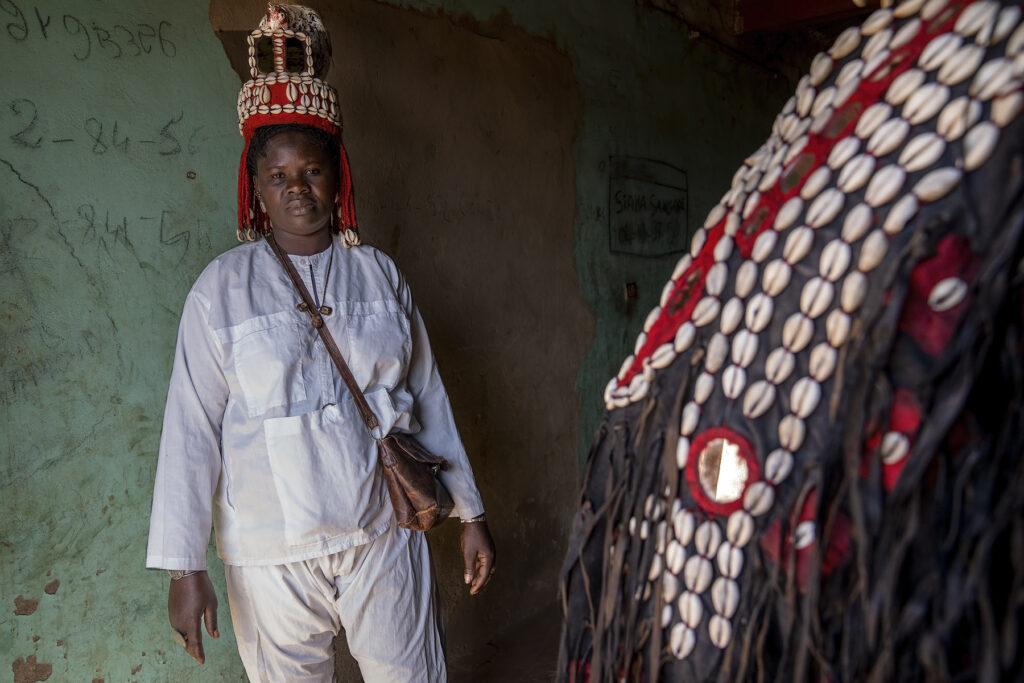
Portrait of a Dozo Queen (image by Rosalie Wang). Why Wild Images loves this – while Dozo men are better known as one of West Africa’s prominent hunting fraternities, not a lot is known about Dozo women. During our 2023 tour we visited a Dozo community and gained a priviliged glimpse into the beautiful decoration of Dozo women. Here a Dozo ‘Queen’ stands in frame with the decoration of a closer Dozo headman, her cowrie-shell adorned crown, complimenting his attire which is most often donned for funerals.
What are you passionate about besides photography? What do you do in your free time?
I enjoy cooking, listening to classical music, reading art history and photo books, and post processing the photos from my trips.
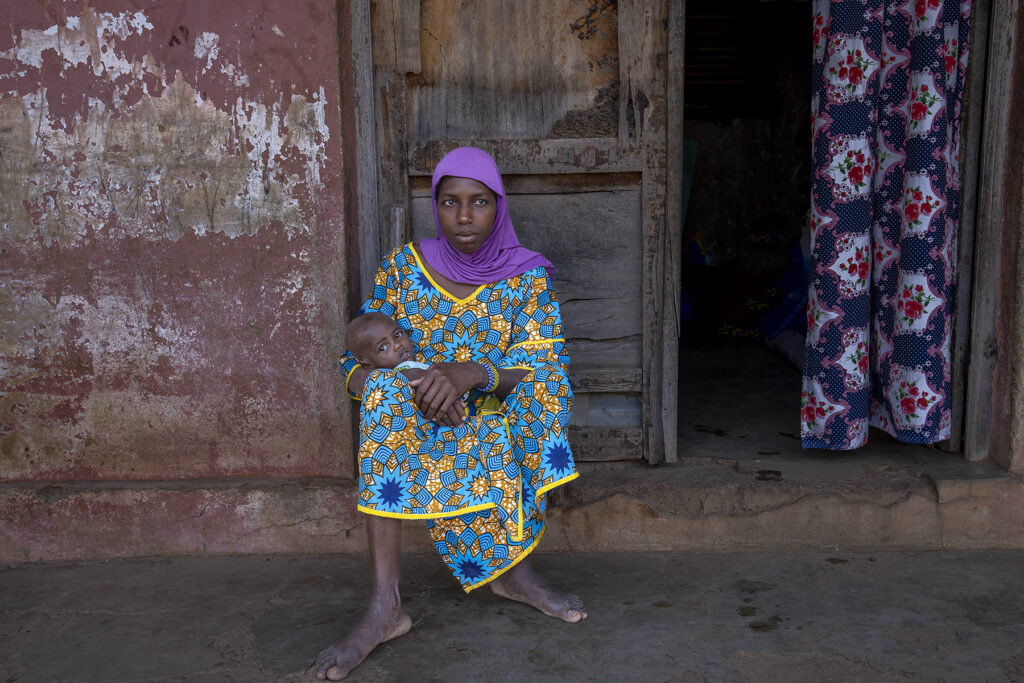
A young Fulani woman sits in the door of her home to nurse her baby (image by Rosalie Wang). Why Wild Images loves this – because we love Fulani people. Just kidding! As one of Ivory Coast’s more impoverished communities, the Fulani people, once they settle in their chosen West African country, often have very little money to invest in the upkeep of their homes. This means that they feature an ‘urban grunge’ look of cracked paint and weathered facades. In this image, a beautiful Fulani mother nurses her child, creating a warm break against a backdrop of her charismatic, worn home in remote Ivory Coast.
What drew you to visit Ivory Coast?
Ivory Coast is known for its diverse and vibrant culture, including traditional ceremonies, and the local markets.
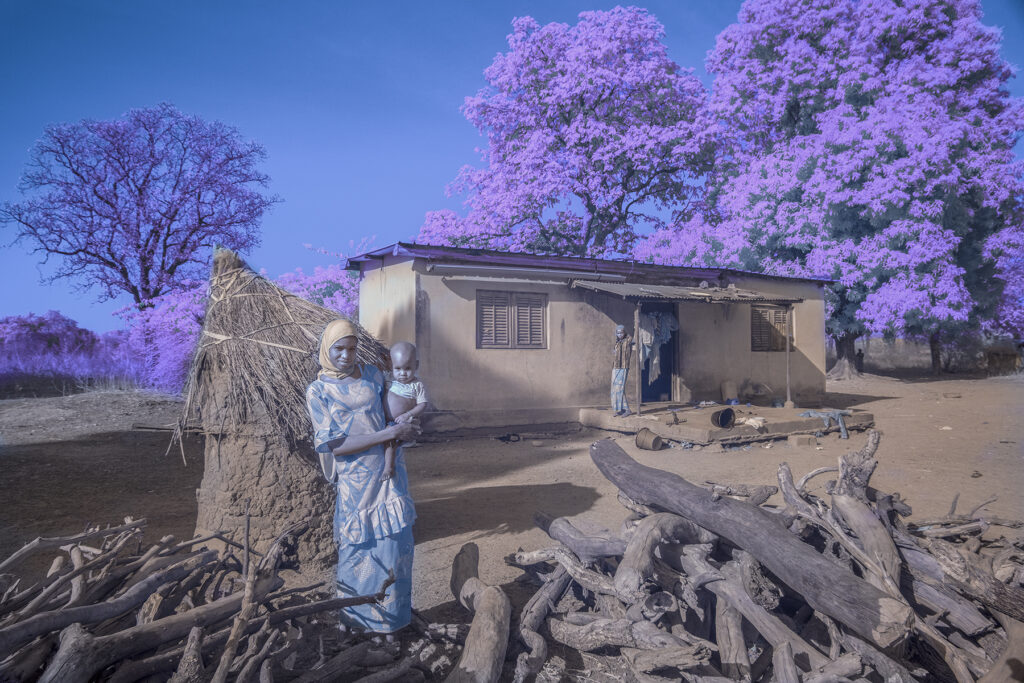
A young Fulani woman and her child in infrared (image by Rosalie Wang). Why Wild Images loves this – Fulani people are arguably some of the most beautiful and photogenic people in all of West Africa. Traditionally nomadic, many of them have now settled in West African countries where they live in structures that represent a more permanent way of life. This beautiful image of a young Fulani mother and her child, not only shows the more permanent aspect of her existence, the hues of rose and blue lend a pretty wash to a depiction of beautiful motherhood.
You may have been the pioneer of infrared photography of Ivory Coast. We don’t believe anyone has photographed the country in this way before you. What advantages did you have shooting in infrared on our trip?
Standard color photography steers clear of harsh sunlight. Infrared photography runs toward it. In other words, the brighter, the better. I only shoot IR during bright, sunny weather from 10am to 5pm. IR is also good for special objects like water, people, sky with clouds, and foliage. Water absorbs IR light, it often appears similar to the sky. On an overcast day, it appears lighter. Skin tones appear to glow and veins are more noticeable, especially see more details on the dark skins. Sky with clouds tends to be very contrasty. Different foliages reflect light differently. The more sunlight that hits the foliage, the more dramatic the infrared results.
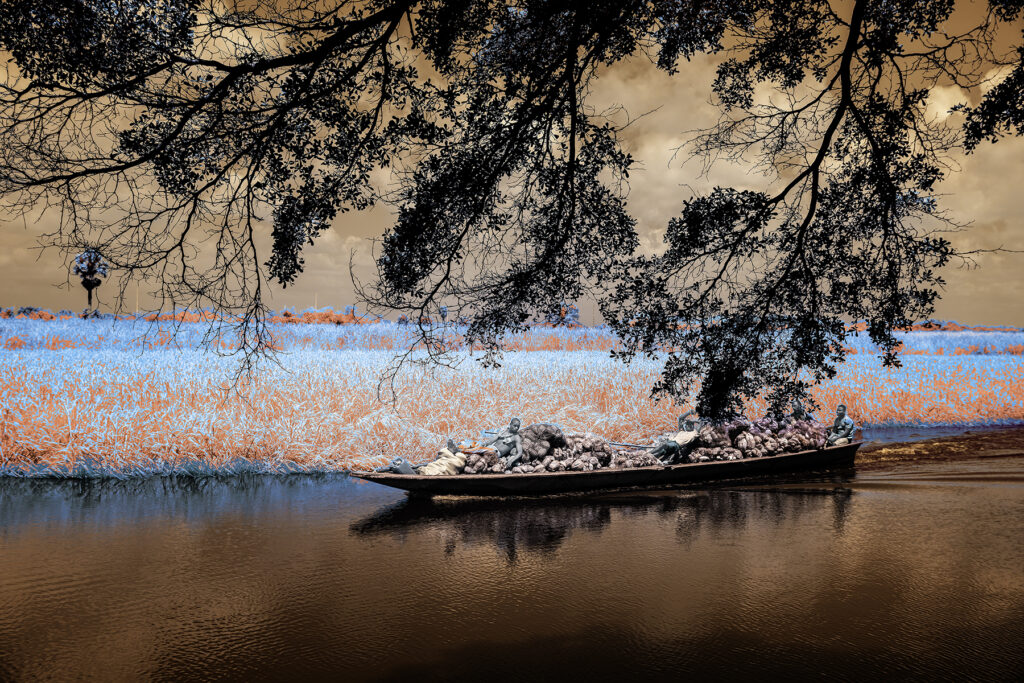
Coconut harvesters motor their wooden canoe through the back canals of Grand Bassam in Ivory Coast (image by Rosalie Wang). Why Wild Images loves this – This photo was shot by chance as we were taking a break for lunch in Grand Bassam. Again, the harsh light made this situation difficult to capture well in normal digital photography. Quickly responding to this, Rosalie shot this photo in IR, which took away the light challenges and created an image that looked more like a painting than a depiction of real life.
What equipment did you use on our tour?
Sony Alpha A1 standard color camera, Sony Alpha A7R4 standard color camera, and Sony Alpha A7R4 camera body converted to full spectrum.
Lenses: 16-35mm and 24-70mm
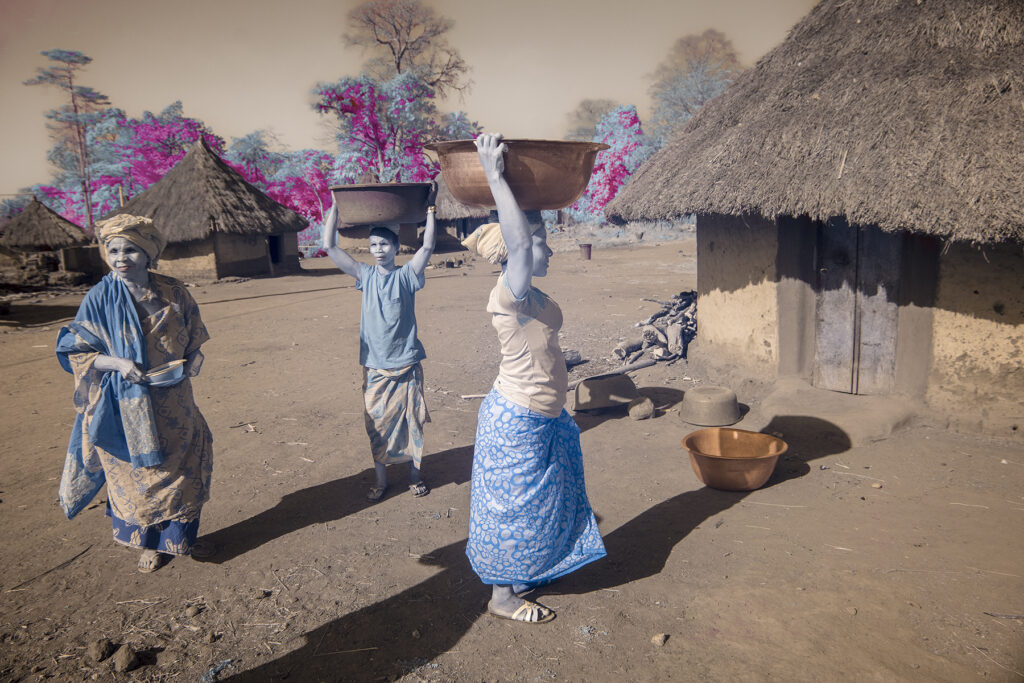
Yacouba women arrive to prepare for the ceremony of Godoufou (image by Rosalie Wang). Why Wild Images loves this – The lively ceremony of Godoufou in Yacouba culture is a form of ‘deportment ceremony’ for women. Oddly the principal colour of this ceremony is blue, so while Roslie’s choice of using IR for this image helped her to combat the strong afternoon light, it also inadvertently tied her photo to an important cultural aspect of Godoufou in a very sensual and beautiful way.
Which infrared filters did you choose and why?
The only IF filter I used in the entire trip is super color IR (590 nm).
Standard IR involves capturing light in the near-infrared region of the electromagnetic spectrum, typically between 700 to 900 nanometers. In standard IR, the resulting images tend to have a monochromatic black and white appearance, with foliage appearing white or light-colored and sky appearing dark.
Super color infrared, also known as false-color infrared photography, involves capturing light in a wider range of the infrared spectrum, typically between 590 and 900 nanometers. This allows for the capture of light that is invisible to the human eye, resulting in images that have a surreal appearance. In super color IR, foliage may appear pink or red, while the sky may appear blue or purple.
Compared to the standard or enhanced IR, the super color IR filter offers a wider range of color possibilities and can produce surreal, otherworldly images that can add a unique artistic expression to your photography. It allows for greater flexibility in post-processing, as the wider color range offers more possibilities for color correction and manipulation.
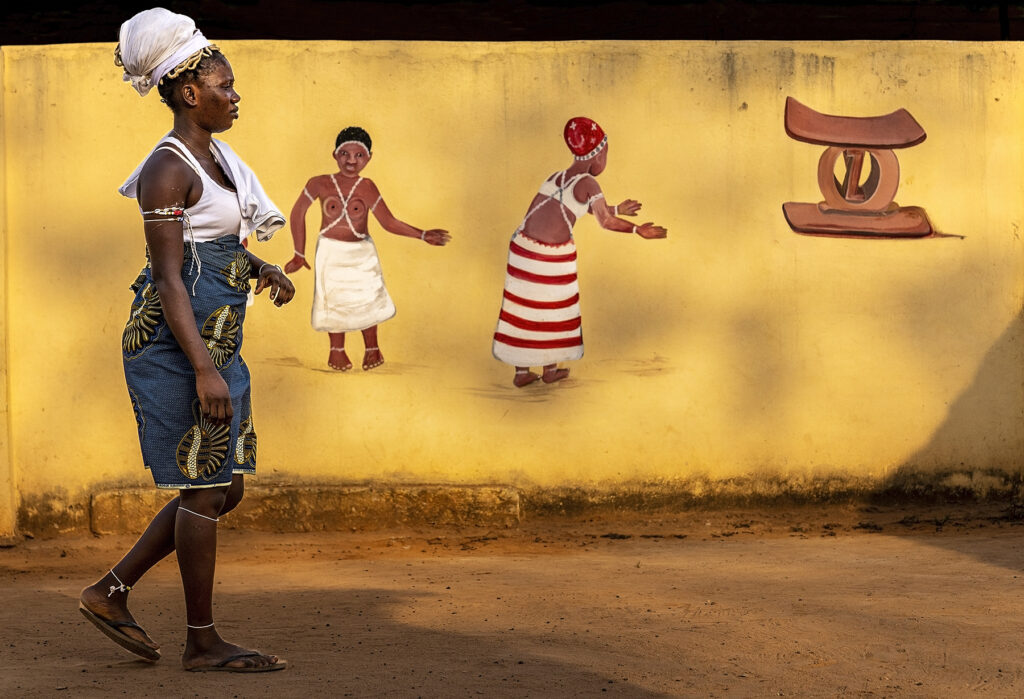
A young Komian woman walks past the mural that celebrates her culture of traditional medicine and soothsaying (image by Rosalie Wang). Why Wild Images loves this – The incredible culture of Komians in Ivory Coast is, sadly, one that is disappearing before our eyes. Learning about Komian culture is now limited to very few venues across West Africa and in Ivory Coast, the once constructed and vibrant school of Komian culture no longer exists. Instead, there is a tiny centre for Komian women that we visit to take photos and it is decorated by elaborate murals that show different aspects of Komian life. What’s lovely about this image is that a Komian woman almost appears to be led into a dance arena by the painted Komian women on the wall of her compound.
What were your first impressions of Ivory Coast for photography?
The first stop was a local fresh fish market. We went through a narrow path between the stalls, crossing in a big scent of the day’s fisheries: crayfish, bar, tuna, barracuda, pike, grouper, swordfish, sole, squid and a crowd of other inhabitants of the sea fished on the same day along the Côte d’Ivoire coast. It is a busy market that gave me a real insight to the daily trade of fish in Abidjan. Most impressive part was the women cleansing and smoking fish corner. They were very kind.
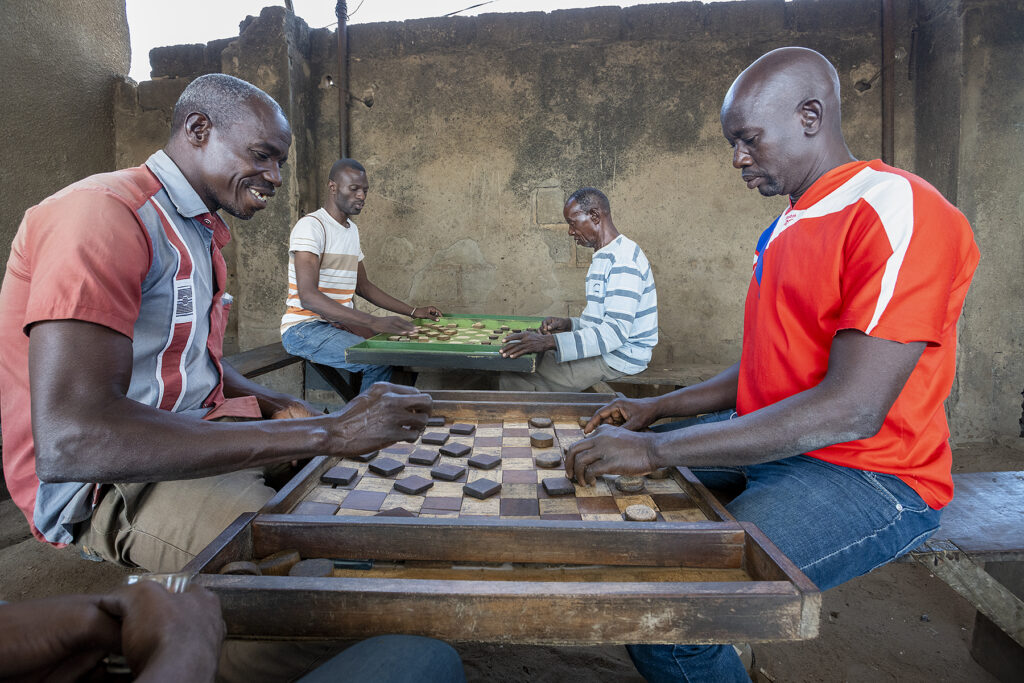
Men playing board games in Kong, northern Ivory Coast (image by Rosalie Wang). Why Wild Images loves this – in the ancient trading town of Kong, northern Ivory Coast, a group of Senoufo men gather to play a local version of draughts. This is a lovely image that shows the various emotions of the players from seriousness, to joy, as they rival each other over their much loved game sets.
What surprised you about your trip there?
We observed 12 ceremonies, experienced different cultures, and visited local markets, villages, shea butter factory, blacksmith shop, fabric printer, and etc. THERE WAS SO MUCH TO SEE!
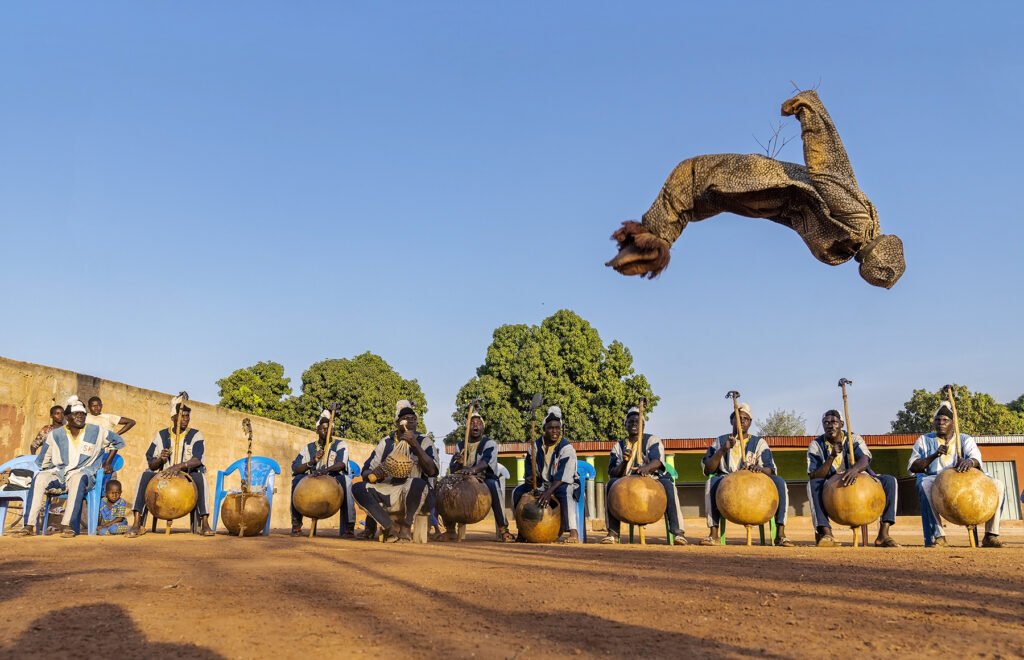
A Boloye dancer leaps into the air with his spotted costume that gives name to the Panther Dance (image by Rosalie Wang). Why Wild Images loves this – we almost always encourage our guests to get low when they take photos in West African ceremonies, particularly with dances like Boloye where the performers leap and somersault high in the air. This is a great image as all of the musicians are looking on in awe at this dancer, almost like they are forgetting to play the music that accompanies him!
What were your frustrations on your trip?
The only concern is if we had stayed in Grand-Bassam for a few more days, I may have had to file bankruptcy after the wondrous and unexpectedly fantastic shopping opportunities!
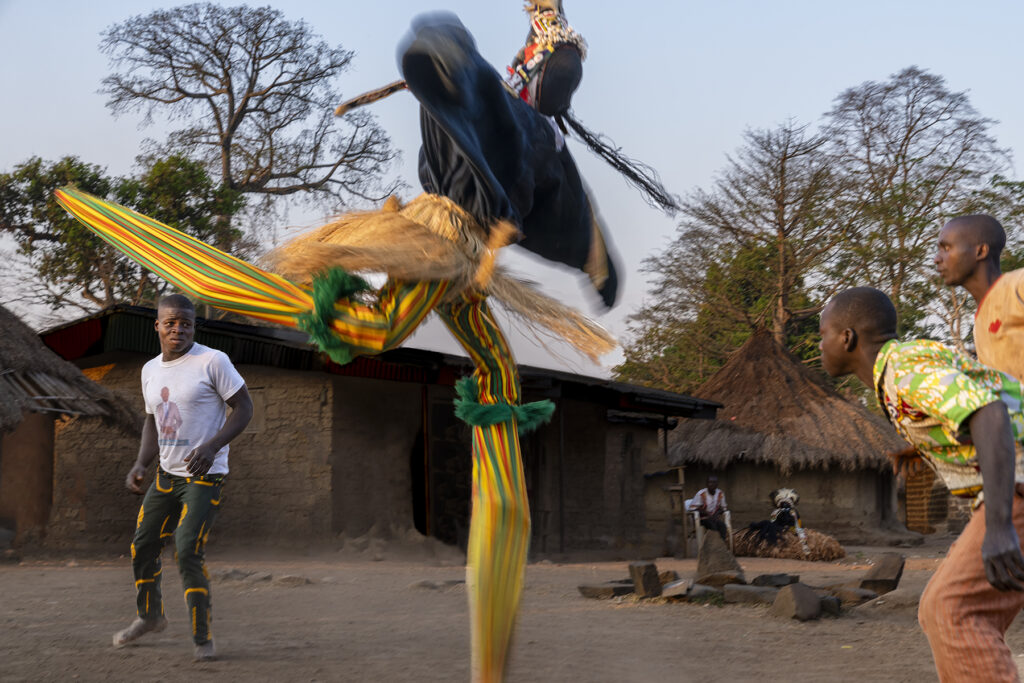
Motion blur of the twirling stilt dancer in Godoufou (image by Rosalie Wang). Why Wild Images loves this – the gyrating stilt dancer of Godufu is one of the highlights of our Ivory Coast tour. This ceremony is performed in a beautiful traditional Yacouba village close to the border of Liberia. It is tricky to capture a motion blur of this ceremony as literally everyone at it is moving wildly in a scene. This image is clever in that the movement of the stilt dancer is juxtaposed against the somewhat stillness, in-focus guardian of the performer. It’s a difficult shot to do well in these circumstances but Rosalie managed to pull it off.
Of all the trips you have undertaken, do you have a favourite destination you prefer to Photograph?
West Africa and South Asia are my favorite areas. I currently focus on west and central african countries with fascinating cultures. I have been to Benin for the voodoo festival & ethnic groups in remote areas. Ivory Coast was my second trip to west Africa. I love both countries very much! Burkina Faso, Cameroon, DRC, Ghana, Guinea-Bissau, Mali, and Nigeria are on my bucket list. I’d like to experience their traditional festivals and ceremonies in the coming years.
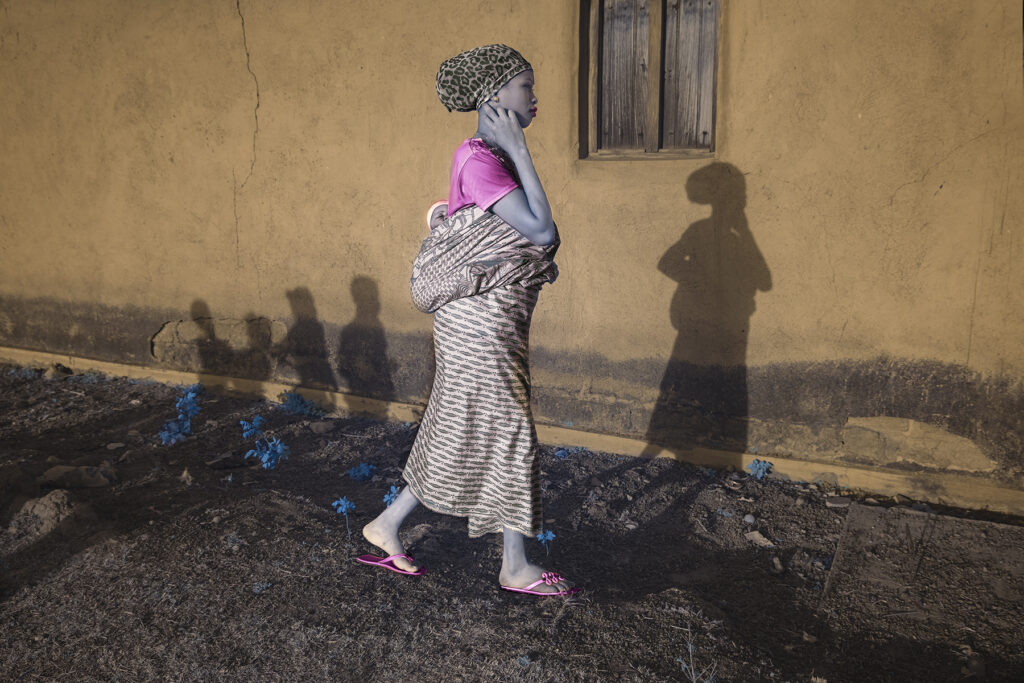
A young woman walks home after the performance of N’Goron (image by Rosalie Wang). Why Wild Images loves this – in our opinion this is a photograph that could have worked well in either colour or IR. The composition of this young mother walking with her shadow cast on a building, then being followed by young children in shadow, is a really fantastic juxtaposition that tells a multi-layered story. The choice of IR here just adds to her beauty, tying in the pinks of her lipstick, shoes and t-shirt, giving her a beautiful, feminine edge.
Aside from the photography, what other aspects of the tour did you enjoy?
The photo tour leader Inger is super knowledgeable about African cultures. The driver and local guide worked very hard. All fellow photographers are great to travel with.
Most of the photo tours I’ve been on do not have much shopping time. In Ivory Coast, we did have a lot of opportunities from endless masks to block print cotton fabrics, shea butter and local handcrafts.
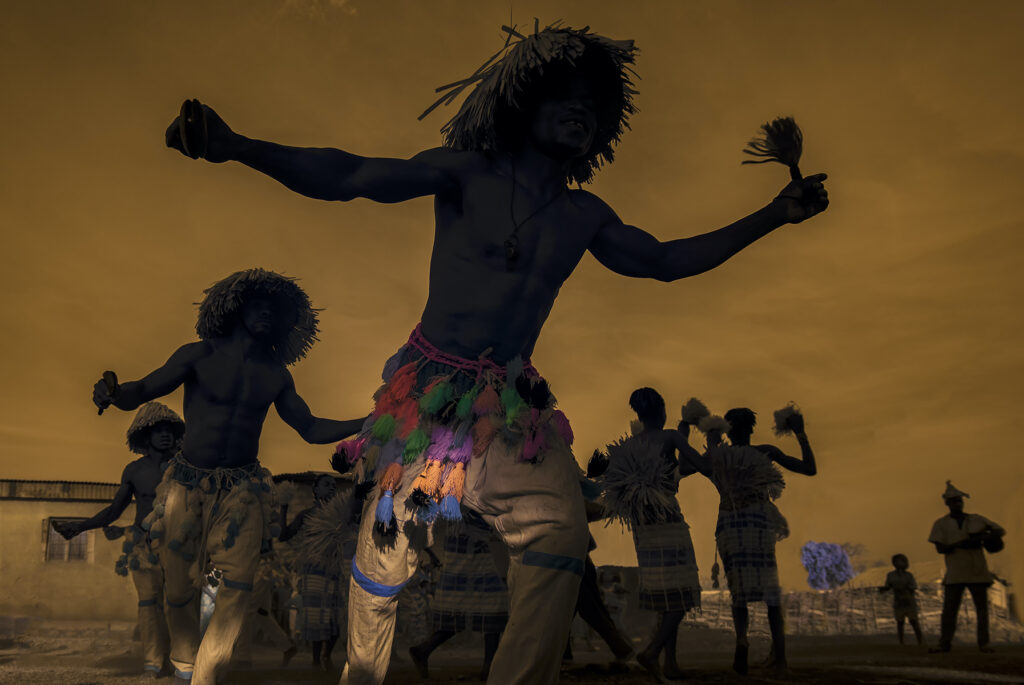
A dramatic display of the Senoufo N’Goron ceremony shot in infrared (image by Rosalie Wang). Why Wild Images likes this – like so many African ceremonies, N’Goron is performed at dusk. Rosalie shot this image of dancers gyrating in a circle as the sun was setting. The IR made them almost appear like ‘moving shadows’ and this image transports the viewer into the world of IR while still reminding them that it was real by the flash of sun on the dancer’s tassles.
What have you learned from your tour of Ivory Coast?
I have learned a lot about the masks’ history and the story behind the mask dances. This trip also made me a fan of wooden masks. Before the trip I thought I would buy a unique mask as a souvenir. After a few mask dances, I was inspired to buy more masks to decorate my home. I have them hanging on the walls of both sides of my staircases and I’m thinking of creating a special mask area. Now I have collected 6, including my favorite Senoufo firespitter helmet mask.
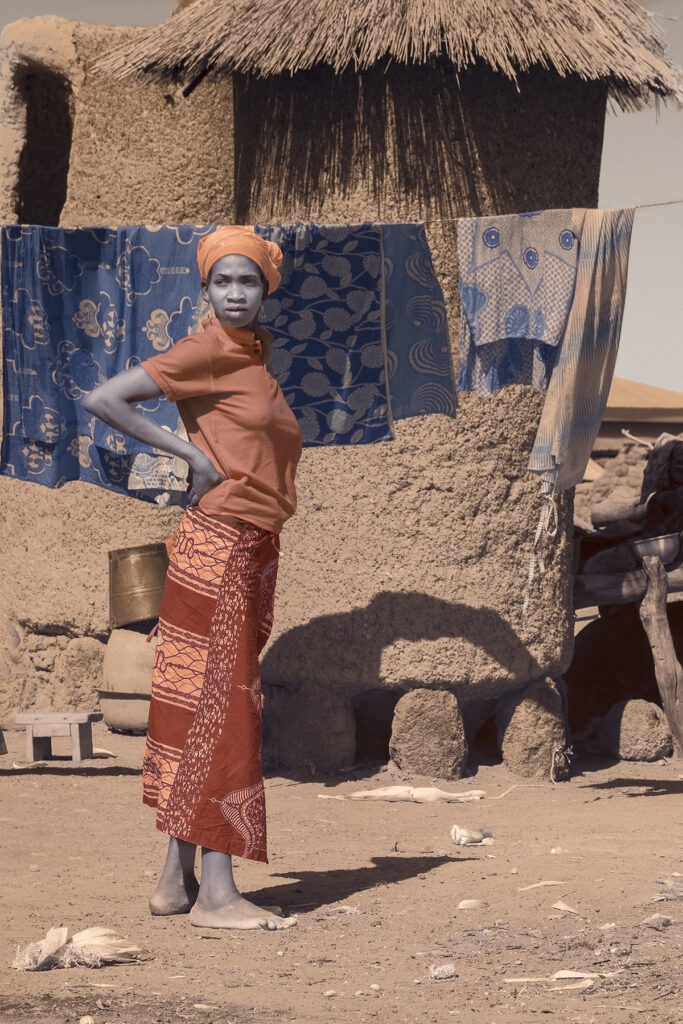
Portrait of a local Senoufo woman in Infrared (image by Rosalie Wang). Why Wild Images loves this – The curious historical architecture of Ivory Coast’s Niofoin Fetish Houses are an integral part of West Africa’s Senoufo culture. They were constructed in such a remote place with nowhere to stay nearby, that visiting them when the light is good for photography is almost impossible. It is on these occasions that IR photography comes into its own. Not only did Rosalie’s IR photo enhance the quirky nature of the Niofoin granaries, her elegantly broken rule of thirds, combined with the complimentary colours in this image all worked well to really capture the unique culture of these villages.
Do you have any advice for photographers visiting Ivory Coast?
Ivory Coast may not be a popular tourist destination but the Wild Images Ivory Coast photo tour was a small group with one leader, and 6 participants. All of the ceremonies were private to our group, which meant that no other tourists or photographers ran in front of us during the whole section.
Open your mind and open your heart.
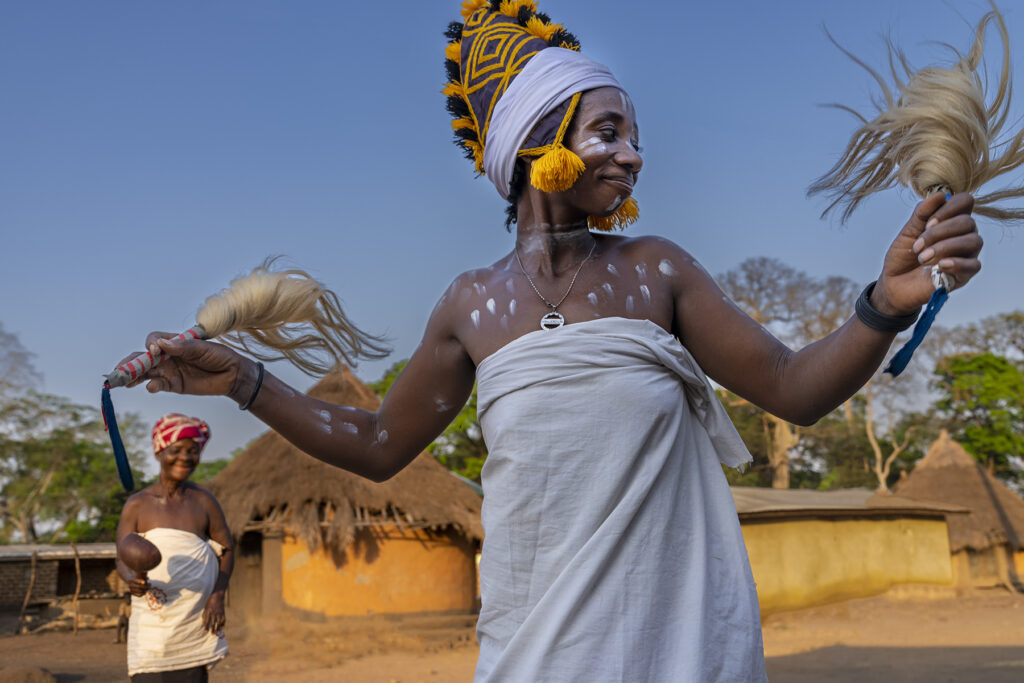
The head girl of Godoufou (image by Rosalie Wang). Why Wild Images loves this – The ceremony of Godoufou is considered an important part of the ‘coming of age’ in young Yacouba women. It is presided over by elder women and a young, newly-initiated woman who all gather to guide young girls into this new part of life. Here, the newly initiated woman twirls into the performance while a proud elder woman smiles and encourages her to lead young Yacouba girls into adulthood.
Are there any images that are particularly special to you?
The colour images of Wambele and Gba.
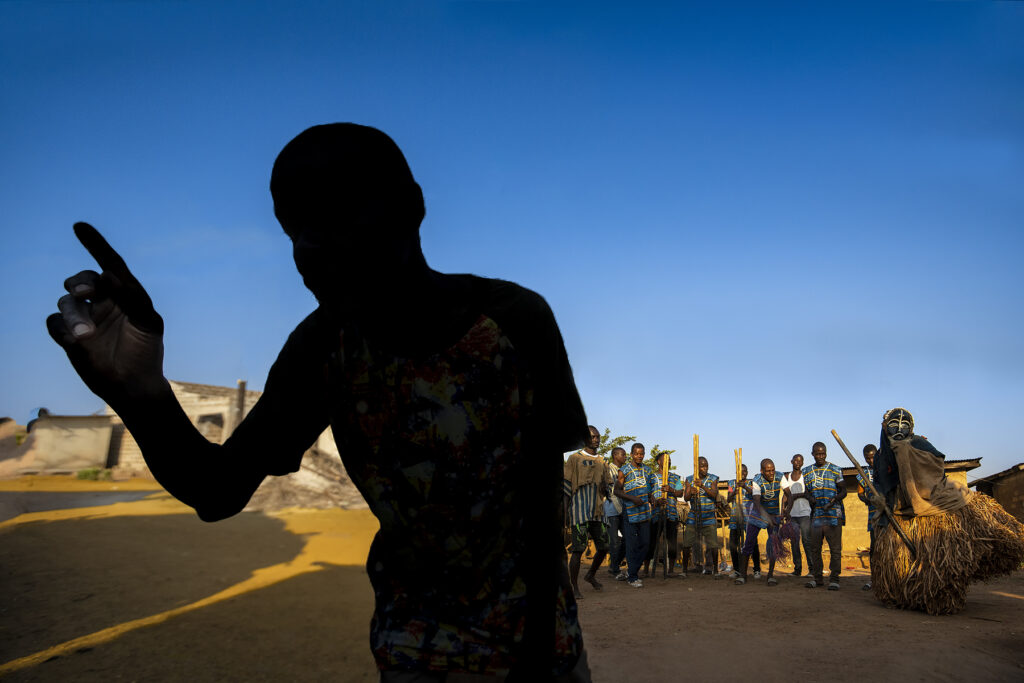
The guardian of Gba warns the audience of the dangers of touching or getting too close to the ‘wood borer’ spirits (image by Rosalie Wang). Why Wild Images loves this – the masked dancer of Gba in Yacouba culture, represents the termite, or wood borer. It is forbidden to touch this dancer, who is considered dangerous and a harbinger of war. As with so many West African masked dances, each performer is ‘protected’ by a guardian who guides the dancer and stops the audience from making contact. Here, the guardian in dark silhouette points his finger, warning the crowd to keep their distance. The darkness of the silhouette gives rise to the importance of his message to the crowd.
Why did you enjoy these images so much?
(1) Favorite mask: The Senoufo “Wambelê” zoomorphic double faces firespitter helmet mask known mainly as “face of the one who throws the evil ones”. It is rare for guests from outside Senoufo secret society to see the magic being performed.
(2) Favorite dance: Gba mask dance tells the story of a young hunter who was lost in the forest and came across a group of spirits. The spirits taught him the Gba mask dance and told him to share it with his community. When he returned home, he shared the dance with his fellow hunters, who then incorporated it into their own ceremonies and festivals.
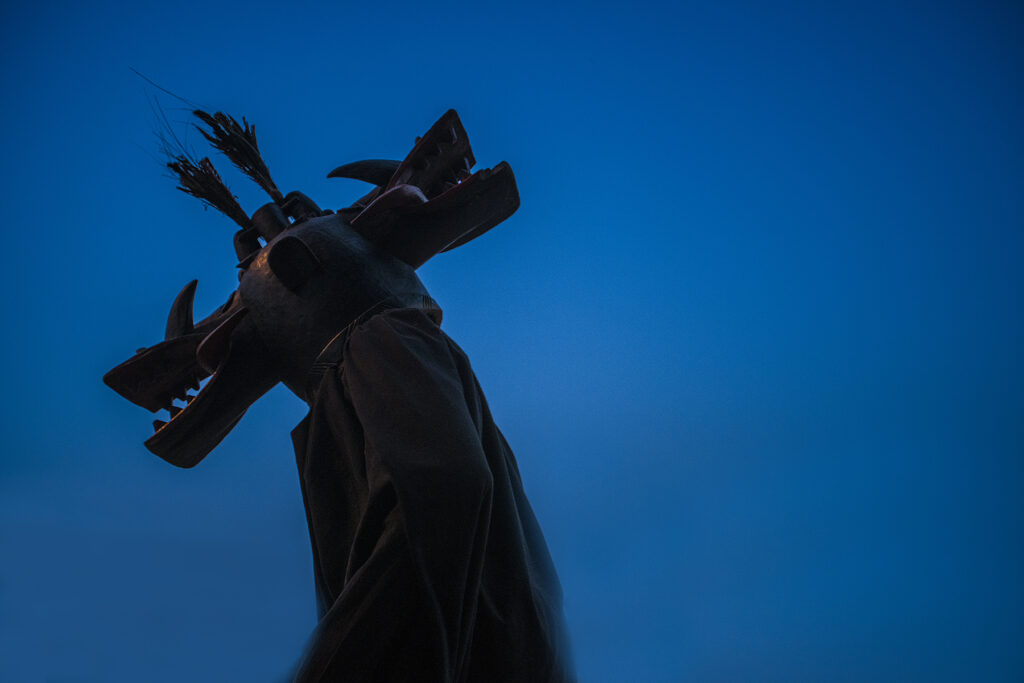
Wambele. The Sourcerer of Senoufo culture (image by Rosalie Wang). Why Wild Images loves this – we had arrived late to a planned ceremony of Wambele. Representing the sorcerer in Senoufo culture, this ceremony is rarely seen by outsiders visiting West Africa. This double-faced mask is the source of magic and can sometimes be seen to spit fire. During our ceremony it didn’t spit fire, it performed other magical acts but the lovely thing about this photo is that the light of a nearby streetlight kissed the otherwise silhouetted black mask with a fire of its own. The blur at the bottom and the encroaching night sky really enhanced the mysterious nature of this masked dancer, that is both feared and revered in Senoufo culture.
Would you return to Ivory Coast for photography?
I would definitely return for more ceremonies or special traditional festivals, especially Fête des Masques festival that is celebrated by the Dan people to honor their ancestors; Nzema people’s Abissa Festival that marks the end of farming season and beginning of a new year, or Goli Festival that Baoulé people celebrates the end of the dry season and the beginning of the rainy season.
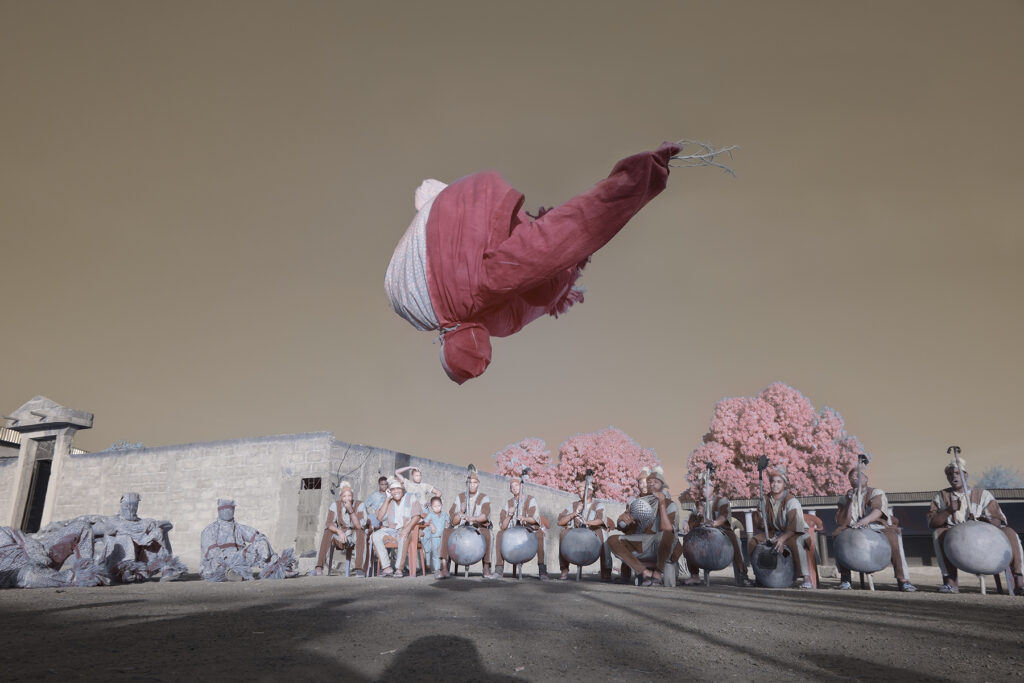
The wildly athletic African ceremony of Boloye. Performed by Senoufo ‘forest student’s Boloye is sometimes called “The Panther Dance” (image by Rosalie Wang). Why Wild Images loves this – During the Senoufou celebration of Boloye, the dancers all initially look the same. They wear similar outfits with only minor variations between performers. The choice of IR in this image, wether intentional or not, brought out a red colour in the main performer’s costume, enhancing his athletic leap into the air and making him stand out in the crowd.
